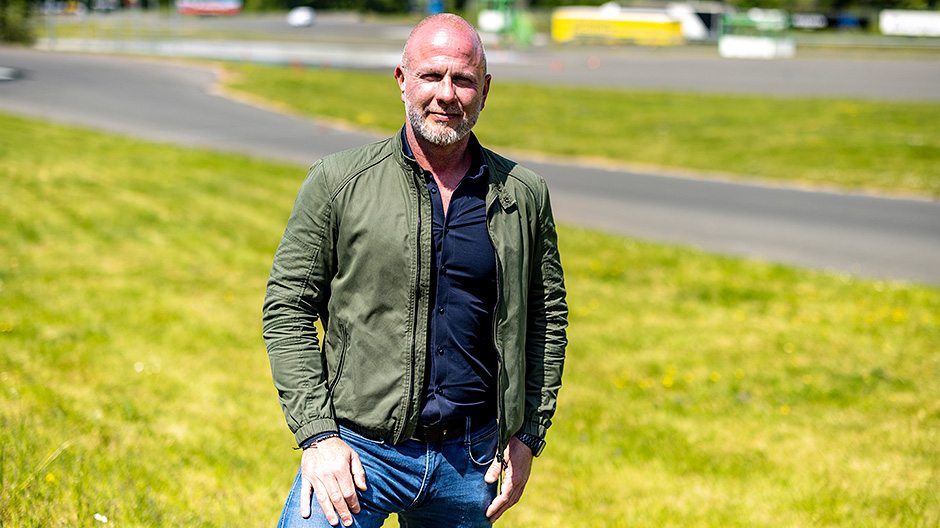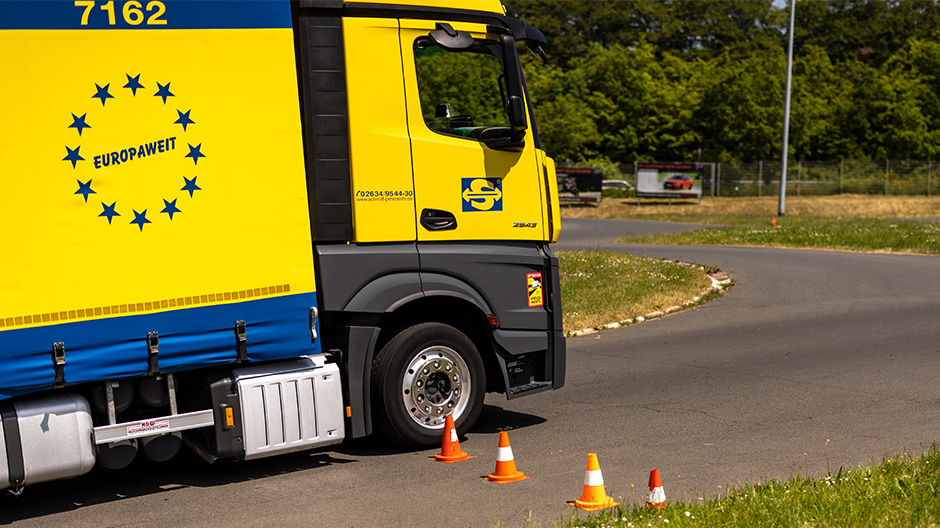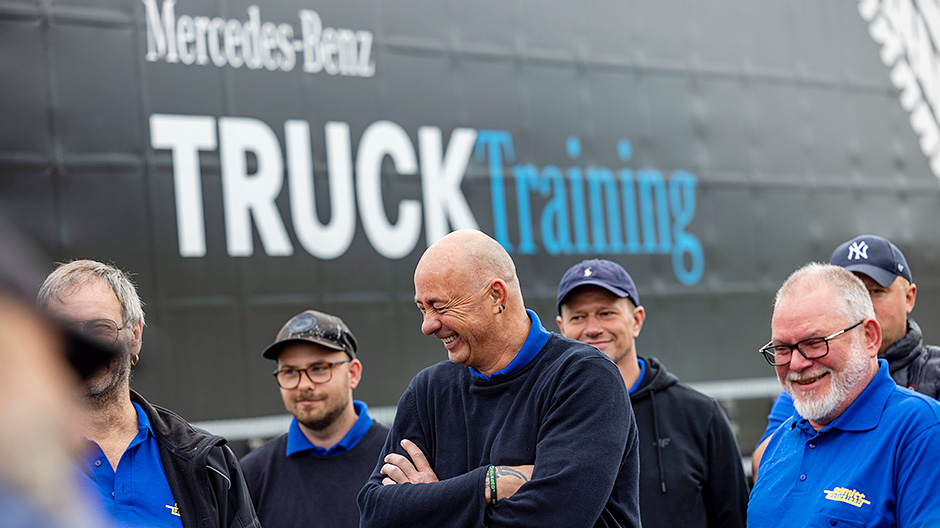
Training for emergencies: Emergency braking at the Ring
Feature
At the Nürburgring, drivers from the Schmitt Peterslahr haulage company practised emergency situations with instructors from Mercedes‑Benz TruckTraining. In focus: the emergency braking system Active Brake Assist 5.

It’s that time of year again on the Grand Prix track next door: The Rock am Ring festival kicks off at the Nürburgring. Just a stone’s throw away, in the south-western region of the legendary motorsports complex in the Eifel mountains, is the driving safety centre, Fahrsicherheitszentrum Nürburgring. The weekend hasn't started here yet. Drivers from the Schmitt Peterslahr haulage company undergo training to stay fit for the road. The exercises focus on safety and assistance systems from Mercedes‑Benz Trucks.
This article contains additional material (videos, images and reports etc.) for registered RoadStars members. In order to experience the article to the full, you need to log in with your RoadStars account or register for one free of charge.
Become a RoadStar and gain access to exclusive content and campaigns!
Login for RoadStars members
Not yet a member? Join RoadStars now
Obtain exclusive access to exciting events and activities which only RoadStars can offer.
Join RoadStarsGain experience and be safe.
The safety training at the Ring kicks off with a demo of
Active Brake Assist 5. The drivers
sit in the truck and look over the shoulder of TruckTrainer Eckhard
Kohn during the intentional emergency braking. When driver trainee
Josef Voronin gets out of the cab after the presentation, he says: “To
have seen this is just amazing.” His colleague Daniel Schmidt adds:
“It’s fascinating that the truck comes to a complete stop. Sometimes
you wish you had such systems in your car. It’s good that we’re being
shown the system here, but I still don't want to experience a
situation like this out on the road.”
Active Brake Assist 5 assists the driver by initiating a full application of the brakes in response to stationary and moving objects, as well as initiating a partial or full application of the brakes in certain conditions up to a vehicle speed of 50 km/h in response to moving pedestrians, thereby reducing the severity of accidents or avoiding accidents altogether.[1][2]





“Many drivers hesitate when making an emergency stop and have never fully floored the pedal. It's something you can practise and they have the opportunity to do that here.”
– Patrick Kölbel, Fleet Manager at Schmitt
Peterslahr

Patrick Kölbel, Fleet Manager at Schmitt Peterslahr, also focused on braking initiated by the driver himself as part of the training programme. “Many drivers hesitate when making an emergency stop and have never fully floored the pedal. It's something you can practise and they have the opportunity to do that here,” says Kölbel. To protect the tyres, the truck is taken to a wetted section of the training centre. The drivers' task: to bring the truck promptly to a stop behind a car in front that is braking hard, by being able to correctly estimate distances and reaction times.




Lots of damage when manoeuvring.
Another focus of the training programme at the Nürburgring are exercises in slow cruising ranges. “We looked at where we had the most damage and manoeuvring is a big issue,” says Patrick Kölbel. The drivers completed several exercises in a confined space: manoeuvring, parking or keeping the artic in lane on tight bends and downhill gradients. An icy road was also simulated in a bend. “Even at comparatively low speeds, this can be a challenge,” says Kölbel.
Patrick Grund has only been behind the wheel for two years. He was particularly impressed by the demo of the emergency braking system. “Training courses like these are very important to us,” says the 25-year-old. “You can always learn something new in our job.”







Watch more clips from Fahrsicherheitszentrum Nürburgring next week and hear what the drivers said after the course.





[1] Within the system's limits.
[2]
Under optimal conditions.
Photos: Alex Kraus
Video: Martin Schneider-Lau




Comment
Please log in to post a comment.
10 comments
Immer wieder bewunderns-/sehenswert, wenn Firmen derartige Trainings für ihr Fahrpersonal anbieten u. damit auch eine gewisse Wertschätzung aufzeigen 👏
Solche Positivbeispiele dürften noch viel mehr Schule machen, denn Schlussendlich wird durch solch gezielte Trainings langfristig "mehr eingespart" als "ausgegeben" 👌
Immer wieder bewunderns-/sehenswert, wenn Firmen derartige Trainings für ihr Fahrpersonal anbieten u. damit auch eine gewisse Wertschätzung aufzeigen 👏
Solche Positivbeispiele dürften noch viel mehr Schule machen, denn Schlussendlich wird durch solch gezielte Trainings langfristig "mehr eingespart" als "ausgegeben" 👌
Siehe RoadStar Fahrsicherheitstraining in Linthe, ......stimmts Udo 🙂👍😉
Siehe RoadStar Fahrsicherheitstraining in Linthe, ......stimmts Udo 🙂👍😉